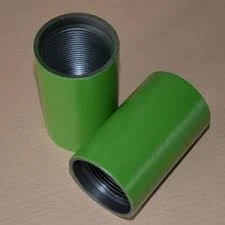- Afrikaans
- Albanian
- Amharic
- Arabic
- Armenian
- Azerbaijani
- Basque
- Belarusian
- Bengali
- Bosnian
- Bulgarian
- Catalan
- Cebuano
- Corsican
- Croatian
- Czech
- Danish
- Dutch
- English
- Esperanto
- Estonian
- Finnish
- French
- Frisian
- Galician
- Georgian
- German
- Greek
- Gujarati
- Haitian Creole
- hausa
- hawaiian
- Hebrew
- Hindi
- Miao
- Hungarian
- Icelandic
- igbo
- Indonesian
- irish
- Italian
- Japanese
- Javanese
- Kannada
- kazakh
- Khmer
- Rwandese
- Korean
- Kurdish
- Kyrgyz
- Lao
- Latin
- Latvian
- Lithuanian
- Luxembourgish
- Macedonian
- Malgashi
- Malay
- Malayalam
- Maltese
- Maori
- Marathi
- Mongolian
- Myanmar
- Nepali
- Norwegian
- Norwegian
- Occitan
- Pashto
- Persian
- Polish
- Portuguese
- Punjabi
- Romanian
- Russian
- Samoan
- Scottish Gaelic
- Serbian
- Sesotho
- Shona
- Sindhi
- Sinhala
- Slovak
- Slovenian
- Somali
- Spanish
- Sundanese
- Swahili
- Swedish
- Tagalog
- Tajik
- Tamil
- Tatar
- Telugu
- Thai
- Turkish
- Turkmen
- Ukrainian
- Urdu
- Uighur
- Uzbek
- Vietnamese
- Welsh
- Bantu
- Yiddish
- Yoruba
- Zulu
j55 coupling
Understanding J55 Coupling An Essential Component in Oil and Gas Operations
The oil and gas industry heavily relies on a variety of specialized equipment and components to ensure efficient and safe operations. One such vital component is the J55 coupling, which plays a significant role in the assembly of pipe joints in drilling and production activities. This article aims to explore the characteristics, applications, advantages, and challenges associated with J55 couplings.
What is J55 Coupling?
J55 coupling refers to a specific type of coupling designed for use with J55 grade casing and tubing. J55 is the designation provided by the American Petroleum Institute (API), which indicates the yield strength and other mechanical properties of the casing material. Couplings are crucial for connecting sections of casing or tubing, facilitating the transportation of oil and gas from the well to the surface. The J55 coupling provides a secure, leak-resistant connection that can withstand high pressures and complex subsurface environments.
Characteristics of J55 Couplings
1. Material Composition J55 couplings are typically made from low carbon steel, which contributes to their strength and durability. The specific alloying elements used help to enhance corrosion resistance, making them suitable for use in harsh environments encountered in oil and gas operations.
2. Strength and Durability The J55 grade has a minimum yield strength of 55,000 psi, making it a solid choice for both onshore and offshore applications. The robust design of these couplings ensures they can handle the mechanical stresses associated with drilling operations.
3. Versatility J55 couplings are designed to fit various pipe sizes, accommodating different well depths and environmental conditions. This versatility makes them an essential component in many drilling programs.
Applications of J55 Couplings
J55 couplings find extensive use in several applications within the oil and gas sector
1. Casing and Tubing J55 couplings are employed to connect casing or tubing joints, ensuring a continuous pathway from the subterranean reservoirs to the surface. This connection is crucial for maintaining integrity and preventing leaks.
j55 coupling

2. Drilling Operations During drilling, the J55 coupling provides an effective link between the drill pipe sections. Their strength is particularly important as they endure substantial torques and axial loads throughout the drilling process.
3. Production After the drilling phase, J55 couplings help maintain the operational efficiency of production systems. Their ability to withstand pressure and environmental stressors ensures safe and effective hydrocarbon extraction.
Advantages of J55 Couplings
- Cost-Effectiveness J55 couplings are relatively affordable, making them a favorable choice for many operators, especially in budget-sensitive projects. - Availability Given their popularity in the industry, J55 couplings are widely available, providing companies with easy access to the components when needed. - Reliability The proven track record of J55 couplings enhances operational reliability, reducing the likelihood of failures and costly downtimes.
Challenges Associated with J55 Couplings
Despite their advantages, J55 couplings do present some challenges
1. Corrosion While J55 is resistant to certain environmental factors, they may still be susceptible to corrosion, particularly in sour gas environments where hydrogen sulfide (H2S) is present. Using appropriate coatings and materials can help mitigate this issue.
2. Compatibility Operators must ensure that the J55 coupling is compatible with other components in the system. Mismatched materials can lead to failures, which could harm safety and productivity.
3. Inspection and Maintenance Regular inspection and maintenance are necessary to ensure the integrity of J55 couplings over time. Neglecting these practices could lead to catastrophic failures during operations.
Conclusion
In conclusion, J55 couplings are indispensable components in the oil and gas industry, providing reliable connections for various tubing and casing applications. Their strength, affordability, and versatility make them a popular choice among operators. However, like all equipment used in demanding environments, they require careful consideration and maintenance to ensure safety and efficiency. Understanding the functionalities and challenges of J55 couplings can help industry professionals make informed decisions and optimize their operational strategies.
-
Tubing Pup Joints: Essential Components for Oil and Gas OperationsNewsJul.10,2025
-
Pup Joints: Essential Components for Reliable Drilling OperationsNewsJul.10,2025
-
Pipe Couplings: Connecting Your World EfficientlyNewsJul.10,2025
-
Mastering Oilfield Operations with Quality Tubing and CasingNewsJul.10,2025
-
High-Quality Casing Couplings for Every NeedNewsJul.10,2025
-
Boost Your Drilling Efficiency with Premium Crossover Tools & Seating NipplesNewsJul.10,2025







